It’s difficult to compare years, but 2023, it seems to me, has been a better than usual year for highly diverse, vividly imaginative music-making. Perhaps that explains why this year’s list has felt more difficult than usual to compile – but here they are, the best of them, all of which you owe it to your ears to experience.
30 | light.box & Emil Karlsen – The Undanced Dance

On the one hand, it’s impossible not to listen to The Undanced Dance and make comparisons with Supersilent. Yet in spite of the similarities (perhaps, in part, because of them) this collaboration between Alex Bonney, Pierre Alexandre Tremblay and Emil Karlsen is seriously compelling. The album comprises three multi-part performances, ‘The Shot Must Fall’, ‘Loosing the Shot’ and ‘The Unmoved Movement’, and the consistency in the trio’s outlook is such that it’s impossible not to hear them as siblings, or even variations on a single behavioural theme. An aspect that recurs so often to be fundamental is an omnipresent question concerning the connection between sound elements. From the outset of ‘The Shot Must Fall’, Bonney’s trumpet, Karlsen’s drums and Tremblay’s electronics can be heard, depending on how you tilt your perceptions, as either playing out in parallel or integrated into a multifaceted whole. To a large degree that liminal situation doesn’t change much throughout The Undanced Dance, and it’s a highly stimulating component that keeps us on our toes, all the more so as the music evolves and changes. Part of this liminality arises from a tendency to juxtapose very slow and very fast elements simultaneously, the former often rapid-fire drumwork or convoluted granular textures, the latter roaming trumpet lines and sustained electronic tones. The high points are utterly exhilarating, most powerful in the first two parts of ‘Loosing the Shot’, where the trio throws all caution and restraint to the wind, allowing the group dynamic to soar in a whirlwind of sympathetic sound formations with us, rendered miniscule, marvelling from its core. [CD / DL]
29 | Oh Land – Loop Soup
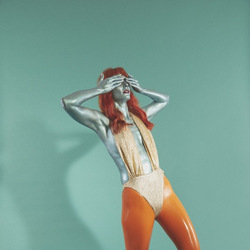
Her sixth album finds Norwegian popstrel Nanna Øland Fabricius as apparently cheerful and chirpy as ever. That in itself raises some questions, considering the emotionally-charged content of many of the songs. Yet she presents a manifesto of sorts in ‘Artists Don’t Smile’, taking issue with the implicit idea that lofty thoughts require highfalutin presentation. This throws a refreshing perspective on the rest of the album, particularly its opening four tracks which are the clear highlights. ‘I’d Rather Sing’ opens Loop Soup with a restrained, lyrical reflection on a litany of questions, but passing over them breezily, “Speaking in a foreign alphabet / I never did / I’d rather sing instead”. ‘Bucket List’ is a simple, happy song about the joys of simply doing things with a loved one, followed by a quick but lilting confessional about the tension between procrastination and impatience, all driven by the excitement of experiences – “’Cause I want it all, I want it now / I’ll never slow down / Want it all to feel like “wow”” – yet with an unexpected coda where it all crashes down. Oh Land’s mingling of up and down is at its most direct, and most pertinent, in ‘Bleeed’, a light but deeply poignant lament about aspiration and accompanying perceptions of failure. This is framed within that most tragic of all contemporary contexts, the low attention, low effort world of social media, where “Right or so wrong, by the end of this song / I bet you already moved on”, yet where, in spite of its pointlessness, “I’m chasing after likes ’cause I like the way it feels”. [DL]
28 | Natasha Barrett – Reconfiguring the Landscape
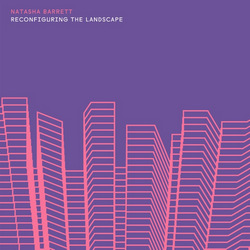
“The five works on the album originate in site-specific projects … acting as a sonic focal point from which perceptions about the listener’s surroundings could be highlighted, altered, expanded and, yes, reconfigured. … the two Impossible Moments from Venice … go far beyond anything naturalistic, moving swiftly between various forms of water over which bells, people, animals and birds swiftly pass by in the midst of less identifiable but nonetheless ostensibly real-world noises. … Speaking Spaces 2: Surfaces from Graz began life as a pair of indoor and outdoor installations. One of the most striking aspects of this piece is its persistent duality of nature and character. Field recordings and electronic sounds; sustained pitched noise and sporadic bleeping elements; burbling details and drifting ambience – these dualities create a soundworld that’s simultaneously restful and energetic, pulling the ear between these different (but not exactly polarised) frames of reference. … It’s no exaggeration to say that the experience of being ‘inside’ Presence / Nærvær was a virtual but very real reconfiguring of my listening space, relocating me back to that hill by the harbour in Oslo, surrounded by the manifold sounds of the city embellished by electronic, synthetic and processed sounds to create a hyperreal, surreal environment that was fully enclosing. Barrett’s compositions are at the forefront of surround sound ambisonics, yet despite being reduced here to a mere two channels, her work remains powerfully, amazingly, immersive.” [reviewed in September]
27 | Toru Takemitsu – Spectral Canticle
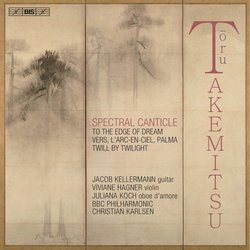
“It’s easy to fall into the trap of regarding Takemitsu’s music as being all about rather aimless journeys through ravishing landscapes. His unique approach to structure was such that he created worlds where anything could happen, apparently spontaneously, and sound absolutely right. … Spectral Canticle is almost entirely unrepresented by existing recordings, which is all the more strange considering it was Takemitsu’s last orchestral work, completed the year before his death. … Karlsen gets a superb sense of rapture from the BBC Phil, who blend into the most wondrous sonic unity. Furthermore there’s a real sense of partnership, of soloist and orchestra listening to each other carefully as an essential part of their forward movement. Together they make Takemitsu’s constant fluctuations of chiaroscuro sound like the changing light resulting from clouds moving in front of the sun. The BBC Philharmonic gets to end the album on their own, in a truly stunning rendition of Twill By Twilight. Again there’s the impression of shifting light conditions, both the brightness and the shadow seemingly oblique, penetrating each other in strange, unexpected ways that only reinforce a sense of quiet awe. … The conclusion of this piece is by far the most gorgeous performance of anything on the album: down into a deep, profound space that gently glistens, before finally entering a low triadic place of peace. … At its best, the levels of beauty attained here are simply staggering.” [reviewed in October]
26 | Erlend Apneseth Trio with Maja Ratkje – Collage

The title of Erlend Apneseth Trio’s collaboration with Maja Ratkje could hardly be more appropriate. Across its seven tracks and 33-minute duration, there’s a strong impression of disjunct elements being assembled, placed alongside each other, juxtaposed, superimposed, made to stand alone or interpenetrate. That perhaps suggests a kind of stream of consciousness, but in fact one of the most compelling aspects of Collage is its sense of, not exactly order, but of a keen guiding force shaping both the long-term direction of each section as well as the moment-by-moment collection of elements playing out. Unusually, Ratkje plays a relatively minor role in the proceedings, showing a subtlety of performance that goes against her more usual extroverted demeanour. She becomes a roaming, shape-shifting voice, sometimes speaking, other times cooing and calling, singing and even exploding into an unfathomable network of vocal tics. The broader context is extraordinary, the trio constructing warm soundscapes that often seem static in the short term but which evolve considerably over time. One of the most striking is ‘Ein annan himmel’ (“another sky”), where driving momentum itself becomes a paradoxical stasis, but as other elements are added they too become held in check by each other, even while the combined quasi-equilibrium grows into a dense, glorious celebration of sound, music, noise, and the very act of group music-making. ‘Tre vegar’ (“three paths”), which opens the album, is less static but similarly intense, an increasingly involving slow-burn from wraith-like minutiae to a stunning harmonious clangour. [CD / LP / DL]
25 | Per Nørgård – Symphony No. 8 / 3 Nocturnal Movements / Lysning

“Lysning is by far the most enigmatic … The title translates to “glade” or “clearing”, yet if anything the music’s continual tilting between light and shadow suggests walking beneath the denser forest canopy as the sunlight continually changes overhead. … In 2013, Kullberg adapted Nørgård’s viola concerto Remembering Child for the cello; since then, Kullberg has … returned to the work a second time to create the Three Nocturnal Movements, now spun into a double concerto. … throughout the work the violin and cello are absolutely in the foreground, while the orchestra is at most an accompanying or atmospheric presence. In the context of nocturnal music, this is absolutely no bad thing, lending the piece an extreme intimacy that’s gently expanded, answered, elaborated and couched by the orchestra. … Herresthal and Kullberg sound absolutely magnificent, both in their own right, following their respective melodic trajectories, and as a tightly-bound duet. … The highlight of the disc, though, is Symphony No. 8 … to be plunged into the maelstrom of the opening movement, with its multitude of simultaneous ideas, is thrilling, giving a sense not of densely packed but broadly dispersed material, made easier to negotiate through a tendency to oscillate back and forth from chamber-like reductions, even dropping to a lone voice two-thirds through. … Symphony No. 8 isn’t about clarity or order, it’s music at the edges, at the extremes even, flying by the seat of its pants unafraid of whether or not we’re able to keep up with its endless invention and unstoppable pace. Storgårds and Bergen capture and stay true to that exhilarating sensibility from start to finish.” [reviewed in October]
24 | Moyka – Movies, Cars & Heartbreak

On the face of it, a 33-minute album of vaguely retro-infused synth-pop shouldn’t be something to get that excited about. Yet Moyka’s sophomore album is an exhilarating synthesis of all the best aspects of, say, Susanne Sundfør and Robyn, articulated with her own unique voice. The title of the album says it all, really: this is a cycle of songs concerned with all of the usual vicissitudes of love, particularly its pitfalls and problems. Yet what sets Movies, Cars & Heartbreak apart is its overall tone and trajectory. Moyka’s songs are projected with a forthrightness, even an ebullience, driven along by burbling, acrobatic basslines. This is despite the fact that their undulating, sometimes precarious, emotional contours encompass real vulnerability, including self-doubt: “Hopelessly in love with somebody / Who doesn’t even want me back … Will I always love you / No matter what you say or do?” (‘Rear View’), potentially unrequited feelings: “I’ll be here, holding on, if you want to” (‘Perfect Movie Scene’), and painful wistfulness: “This would not happen in the movies / Two of us, but we’re waking up lonely” (‘Never Say Sorry’). The ostensibly incongruous upbeat nature of these songs indicates all that hurt is matched by something even stronger, and the reason for this gradually becomes more and more clear. There’s an overwhelming message of triumph at the core of this album, a triumph that manifests in coruscating anthemic choruses that progress from being merely sanguine to full blown, punchy celebrations of resilience. Pop has rarely sounded so simultaneously poignant and exultant. [DL]
23 | Coppice – Draw Agreement

“Few releases i’ve explored this year have pulled me into their orbit so completely, and so (in the best sense) puzzlingly, as Draw Agreement … An integral part of that playfulness arises from the way Coppice have taken fragments from their earlier work … and incorporated them … in entirely new contexts. … Circumpass and Compass, both short studies, conjure up similarly disorienting, sonically liminal environments. Circumpass blends tactile noises with soft electronic tones such that they become indivisible, colouring them with surges of burbling stuff, faint traces redolent of instruments, skittering sounds and low buzzes that keep the ear constantly on the move and refocusing at different levels. … By contrast, Compass, while again mixing tangible and intangible sound objects, nonetheless speaks more directly, via the emergence halfway through of a slow semblance of bassline while a strange, wiry melody meanders above. … Where Draw Agreement is at its best is in its central panel … a pair of lengthy studies that recontexualise Compass and Circumpass … . These are among the most engrossing works Coppice has ever produced. The first, Rotations in Refractor, harnesses the hugely powerful mechanical sounds of the Observatory in a diptych-like structure. … Turning in Reflectors is more collage-like, juxtaposing and superimposing elements to form a continually changing palette of click and clunk. … Equal parts research, experiment and music, Draw Agreement‘s achievement isn’t just in the brilliant, mesmerising explorations … but also in the way it makes one reflect on (and literally hear) their earlier work in a new context…” [reviewed in December]
22 | Elis Hallik – Born in Waves
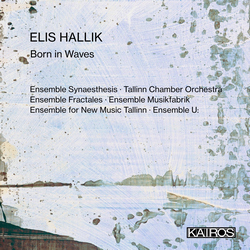
“Composed in 2016, an interesting aspect of To Become A Tree is the way it moves from an initially vague, broken-up soundworld to a point where the bass clarinet assumes command, squalling into the foreground and highlighting how reserved they’ve all been. … Deep grinding, rumble, resonance… and the work ends; that description perhaps sounds somewhat uneventful, even anticlimactic, but there’s a fascinating sense of interaction and effort permeating the material; perhaps To Become A Tree is less about the result than the effort. … Stoicheia, a concerto for two violins and strings … is a powerful demonstration of how nebulosity and lyricism can come together to make something elusive yet immediate. Taking its title from … Euclid, the piece somewhat alludes to this in an introduction filled with elemental possibilities: gestures, ricochets, runs, melodic feelers, emerging from a kind of treading water to prepare what’s to come. … The emphasis in many of these pieces is quite abstract, focusing on the purely musical, but a markedly different tone is heard in Touching the First Sounds … It’s as if the instruments were caught in the pull of an outside force, causing their pitches to rise, in the process making their united song more plangent and forceful. It’s a mesmerising sequence … Above … unfolds as a blurring of consonance and dissonance, where tones buzz and jar against each other in close proximity, causing ephemeral semblances of clarity that are immediately lost in shimmer. … There’s something hymn-like about its dogged forward motion, forming abstract shapes that once again become a chorus that could hardly be more expressively immediate.” [reviewed in October]
21 | Alison Goldfrapp – The Love Invention
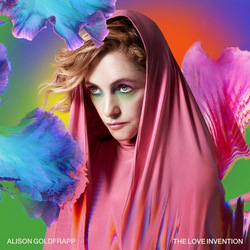
Listening to her first solo album, you’d be forgiven for thinking that we’ve travelled a million miles from the blissed-out beatless debut Goldfrapp album (with Will Gregory) Felt Mountain. Yet bliss isn’t just a mainstay of Alison Goldfrapp’s musical thinking, it’s its raison d’être. So it is that the 11 tracks on The Love Invention are infused with positivity, drenched in the sweat of love as dream, fantasy and experience. The album’s cover is a blaze of colour, and this is immediately echoed in the music; opener ‘NeverStop’ (so impetuous even the two words of its title run together) is all brightness and optimism, celebrating connection, Goldfrapp’s voice as familiarly breathy as ever, declaring, “never stop loving”. Many of the tracks hark back to the Black Cherry era, propelled along by the most insanely gymnastic basslines squelching out of real or reproduction retro synths, with such a glossy veneer they’re practically shiny. The songs often have periods of harmonic stasis that reinforce their sentiments, all of which lead or build up to what Goldfrapp does best, big choruses that radiate immensely. Even when she’s more laid back, the same sense of euphoria persists, an ecstasy that in ‘Gatto Gelato’ proves so potent language practically breaks down, its lyrics a collection of emotional fragments, like an orgasm glimpsed through internal feelings and external motes of vocabulary. There’s nothing equivocal here; The Love Invention is a glorious paean to love, life and sunshine. [CD / LP / DL]
20 | Éliane Radigue – Occam Delta XV
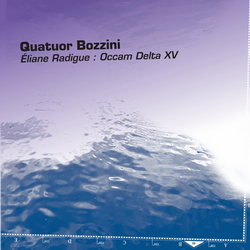
“i used the phrase “unstable stability” to describe the piece before, and as with so much of Radigue’s music, that seems to be an appropriate way to regard its inherent musical behaviour. But of course, the key thing with both of those words is that they constantly undermine each other. What this does not result in is ‘balance’; on the contrary, while there’s the semblance of an equilibrium, Occam Delta XV occupies a gentle but permanent tension, like a piece of elastic constantly being gently stretched and released. i don’t hear that as ‘balance’, but as flux, friction, discreet energy, with the abiding sense throughout that, though where we are right now might be somewhere we stay for a while, the music is always looking ahead, ever caught in the midst of a gradual process from infinity to infinity. … In these two performances of Occam Delta XV that liminal stasis is beautifully realised, the Bozzinis keeping things in a tantalising state of sounding resolved, unresolved and in the process of resolving all at the same time. The work’s fluid harmonicity passes between contrasting states of simple and complex, purity and dirtiness; oblique notes suggest themselves as passing notes but don’t so much resolve as become grafted onto the chordal core. Even after this has happened, and that core has been delicately recoloured, it still doesn’t sound like a resolved action; again, everything points on, to the necessity for something more.” [reviewed in May]
19 | Colin Andrew Sheffield – Images
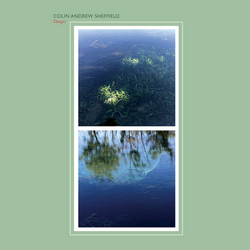
“Sheffield often turns to extant music as the basis for his own, and it’s jazz that serves as the starting point for the eight tracks on Images. The result is an amalgam of plunderphonics, ambient and hauntology, in a way that often brings to mind James Kirby’s seminal The Death of Rave. As such, there’s a sense of nostalgia permeating Images, though equally Sheffield takes a somewhat abstract approach, interested less in what jazz is than what it’s made of, to the extent that this is not so much a homage as a direct response to the kinds of timbres and gestures found in the source material. … It’s an aesthetic choice, but Sheffield clearly delights in sculpting and mangling his sources in a way that sounds crude and obvious: to put it another way, there’s no attempt to hide or prettify the creative process. ‘Crescent’ is therefore the ideal way to open the album, being as it is a dense texture very obviously made up of a jumble of things being mashed up, with cymbals emerging especially prominently. … Especially striking are the times when Sheffield embraces this fuzzy obscurity and becomes focused on it. ‘Daylight’ seemingly takes its title from the brightness of its metallic, hard-edged shimmer, which has a transfixing effect. Rather than revealing details within, this outward shimmer appears to be modulated by otherwise unfathomable inner material, forming strange, quasi-melodic contours that together form a madly convoluted topography.” [reviewed in December]
18 | Synne Sanden – Unfold

Norwegian singer Synne Sanden’s fifth album is one of the year’s most spectacular demonstrations of genuinely imaginative pop. Even calling it ‘pop’ is to do it a disservice, all the more so as, while verses and choruses do feature in her songs, they nonetheless seem to be serving a broader narrative rather than mere conventional structures. Those narratives are driven by a tendency toward understated yet ever-present passion, as in ‘Rubberband’ and ‘Forced Restraint’, where relaxed music yields to anthemic moments, and the ongoing intensity of ‘Firewood’, a song continually tilting on its axis, only revealing its inner blaze briefly. ‘On Needles’ goes a different way, eschewing beats altogether yet with a palpable fizzing at its core. ‘Go On Torture Me’ is mild and unassuming until its coda, when everything suddenly becomes incandescent. This approach is used elsewhere, to huge effect. ‘Images’ is even more low-key, Sanden’s voice radiating lyricality from within a reverb-drenched wash. Soon enough, though, it expands like a brilliant bright light, though just when it threatens to overwhelm, Sanden softens into soft, beautiful poignancy. In ‘Witness’, heat is used as one pole of a continual oscillation between drifting cool (again beatless) and fiery refrains. Sanden perhaps saves the best for last: closing track ‘Inhalation’ is so blissed out that its fire is almost undetectable until the final chorus abruptly ups the ante, revealing the glory within. [DL]
17 | Alex Paxton – Happy Music for Orchestra

To try to talk about Alex Paxton’s Happy Music for Orchestra in descriptive terms is borderline impossible. What can be said, and it’s instantly obvious, is that the album’s title is a superbly accurate description of what it contains. Beyond that, it’s necessary to simply get lost in Paxton’s deliriously, ecstatically upbeat textures that throw together elements redolent of Milhaud, Zappa and John Williams (among others) into some of the most genuinely extraordinary orchestral music you’ll ever have the good fortune to experience. It is quite staggeringly happy, primarily due to its unstoppable, continue-at-all-costs need to sing. Melody is literally everywhere in the six works on this album, sometimes the messy net result of a chorus of exuberant kindred spirits letting rip with the simultaneous elegance and zeal of football supporters. More often, though, it’s heard as a fundamental behavioural trait manifesting in a literal multitude of simultaneous, parallel melodic threads forming a gleeful cacophony of song, like a demented dawn chorus, heard to best effect in the album’s highlights, Od Ody Pink’d and Sweet Wishes. Indeed, it’s rarely obvious whether there’s any meaningful connection between players at all, as in the wonderfully bizarre off-kilter mess running through Strawberry, which appears at times to form some semblance of fucked-up coherence around the vocalist but elsewhere is a riot of chaotic melodic merriment. Paxton has set out to create the ultimate experience for the aural senses – it’s undeniably a superabundance, yet it’s also an unbelievable, glorious treat. [CD / DL]
16 | Jacob Mühlrad – REMS
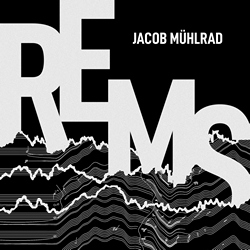
Swedish composer Jacob Mühlrad’s latest album is a testament to different forms of obsession. On the face of it, radically different, as the two works on this album could hardly be more contrasting in terms of scale: the 8-minute Maggid for solo cello, followed by the 25-minute orchestral piece REMS. Yet in some respects their motivations feel connected. In Maggid, cellist Johannes Rostamo’s entire world seems to be focused entirely on a low register motif, and its articulation and development. It’s as if we were witnessing a private act, Rostamo intensively working away on the myriad ways to express this motif – as if none of them was entirely satisfactory – occasionally vocalising along the way as if externalising something ideal. He eventually finds his way to what seems like a significant lyrical breakthrough, but even after this the same obsessive spirit continues to be fascinatingly caught between an expressive heart and intellectual head. REMS explores issues associated with sleep and dreaming, in a soundworld that veers between a kind of whoozy, blissed-out haze into which periodic bursts of power and momentum impose themselves. Mühlrad’s handling of the orchestra is imaginative and effective, never concerned with marshalling the forces into overblown tuttis but, rather, using them as a multifaceted resource to fashion music that comes to seem similarly obsessive as Maggid. However, whether it’s the demonstrative or the restrained music that’s the focus of that obsession is left nicely ambiguous. [CD / DL]

Blimey. Here’s another reminder dear of how much I’ve missed this year. I’ll probably have to spend the next twelve months catching up!
Of the three I do know from the list here, I’d certainly have the Elis Hallik in my top picks of 2023. I’m looking forward to your full list!